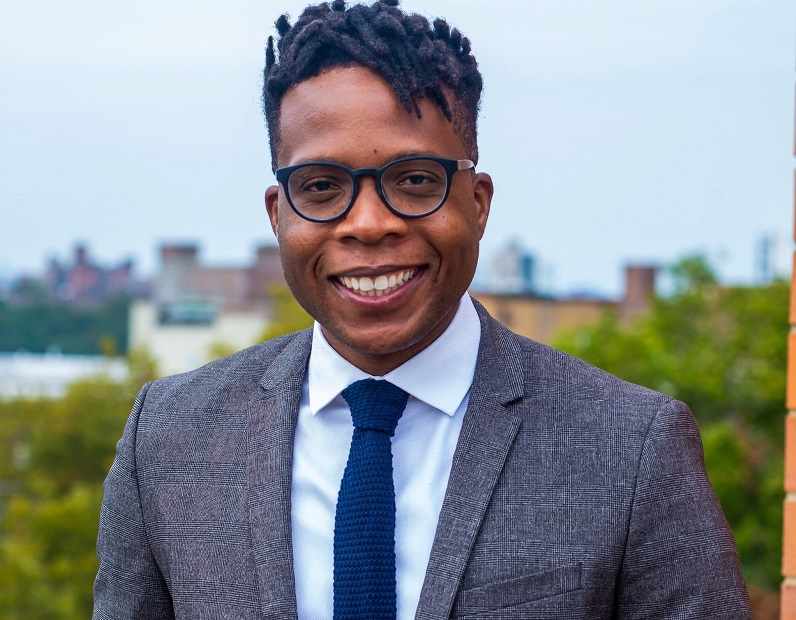The impact of racial equity movements like Black Lives Matter on businesses is profound, from the way firms recruit talent, to how they support their existing workforce and communicate with customers, including, for some, the talent that is behind messaging and content.
DiversityQ speaks to Global Head of Diversity, Equity and Inclusion at Shutterstock, Meeckel Beecher who details the impact of social justice consciousness-raising on marketing and content creation and what Shutterstock is doing to make business communications more inclusive and accepting of difference.
What effect has the last year and a half had on diverse representation within media and marketing?
Anti-racism movements have had a huge impact on the marketing industry during this period, nearly two-thirds (63%) of marketers across the world stated that the Black Lives Matter and Stop Asian Hate movements significantly impacted their content decisions. Consequently, over 61% of UK marketers have taken these movements into consideration to demonstrate diversity in their campaigns.
As a result of the global pandemic and lockdowns, creatives have been forced to find new ways of working. Over a third, (34%) of UK marketers stated that travel restrictions have had a significant impact on their ability to source diverse content, which has required many to alter their traditional working methods. Yet this has had a positive effect, as content is now being created by local artists, producing more authentic marketing campaigns.
Traditionally, the process of creation involved large scale productions with sizable gatherings and costs to match. However, over this past year due to a varying scale of restrictions, these have not been as accessible. Marketers needing globally relevant and diverse content have instead looked to Shutterstock to partner with our global network of contributors to produce local and authentic content on their behalf.
With an increasing demand for localised content creation, we must continue to utilise this way of working even as we look beyond the pandemic, tapping into local creative talent that will result in far more authentic content for campaigns.
Why is it so important for diverse and authentic talent to be behind the creation of content?
Diverse talent brings diverse experiences to conversations. A diverse team helps to limit “groupthink” and encourage new ways of doing. People bring their lived experiences to the work that they do. They also bring the knowledge they have of different communities and concepts and when all experiences and knowledge are included we can create content that is authentic and will connect to the intended audience.
Representing diversity in your campaigns can improve a company’s contribution towards a more aligned society, improve an individual’s trust in a brand and allow a brand to target a new audience. Our diversity report revealed that 74% of marketers globally believe that using more diverse content will create a positive impact on a brand’s reputation. This statistic implies that diversity contributes to a company’s decision process and plays a crucial step towards building a business’s reputation.
As curators, including content that accurately represents the breadth of identities and cultures seen across the world, is the best way to empower brands and marketers to implement these changes. Providing marketers with the best tools and insights to build representative campaigns is how we try to drive the industry towards meaningful changes.
What is Shutterstock doing to support the industry in increasing diversity within marketing and advertising?
Driving the industry towards a more representative future is really important to Shutterstock. Shutterstock takes pride in ensuring the content we share across our platforms is diverse and authentic.
We are guided through our principle to ‘Seek Diversity’. With 1.9 million contributors in October 2021, we believe that including diverse perspectives, opinions, and experiences make us stronger as a curator. We hope this will be reflected across the industry.
Last year, we highlighted the work of eight artists from around the world through our “All The Best Artists” campaign. This campaign celebrated the diversity of Shutterstock’s community. We think it is important to celebrate the artists who contribute to our platform, and we want to increase the opportunities that are available to those who do not traditionally have them. For this reason, we launched the Create Fund, a grant programme that was developed to financially and professionally support artists who are contributing to the global Diversity, Equity and Inclusion (DE&I) mission through representing historically excluded communities in their content. As a part of this, we partnered with the It Gets Better Project, to offer a grant which aims to challenge the visual stereotypes and improve the representation specifically of the LGBTQ+ community and improve the education of the media and marketing industry regarding the power of diverse photography, both in front of and behind the camera.
More recently we partnered with the American Society on Aging for the ‘Keep Age in Focus’ fund that supports creative projects showing the diversity of the ageing process.
We understand our role as a curator for our users within the creative industry and an important part of this role is encouraging the representation of diverse content.
Our differentiation is our work to empower users’ creativity through our content, applications and services. By prioritising diversity in our content library and contributor network, we can help brands to immerse themselves into the topical cultural conversations and trends, authentically.
What advice could you give to companies not already accurately representing diversity within their campaigns?
My main advice for marketers looking to improve the diversity in their practises would be to focus on clear, actionable, and importantly measurable internal goals, which allow you to focus on your own DE&I journey. Whilst benchmarking is important to see how you compare, every company’s progress is unique.
What is the main problem brands come into contact with when trying to accurately represent a diverse community in their campaigns?
To successfully implement DE&I into a campaign it must be created from a holistic perspective. For marketers, I would recommend they approach their campaigns from these three perspectives.
Firstly, you must ensure your team is diverse. Having strong diverse foundations is crucial to ensure your content matches. Diverse teams are far more likely to understand the importance of producing diverse and representative content.
Secondly, implementing DE&I policies into your strategy from the outset is crucial. Building these policies into the foundations of your strategy rather than adding them as last-minute additions will mean that it will be a continuous point of measurement going forward.
Finally, incorporating accountability to ensure leadership is held accountable for delivering on these objectives and able to empower teams to strive for success.
What and how would Shutterstock like to see change in the industry as a matter of urgency?
As a global creative platform, we see it as essential to address the need for more diversity in content. Marketers respect their consumers’ identities and understand the way to connect more closely with them is to represent them authentically in the media they consume.
As seen in our diversity report, there were some results indicating positive change, but we also found some gaps where more needs to be done to ensure content accurately represents the world across the board.
We’re looking forward to collaborating with our partners to do the work. It’s positive to note that people are listening, and our mission at Shutterstock continues.









